Hydration: Best Practices for Hiking

Whether you are heading out on one of our backpacking trips in Yellowstone this summer or taking on an adventurous day hike in Utah’s mighty desert, it is very important to follow smart hydration practices for hiking. Why is water while hiking important? Improper hydration on the trail can leave you feeling lethargic, dehydrated, and weak. And, if you plan on spending multiple days in the backcountry, you need to hydrate properly in order to feel fresh and ready to tackle each day’s challenges.
When hitting the trail on your own or on one of our unforgettable hiking vacations, make sure to follow these simple tips and tricks for drinking plenty of water while enjoying the beauty of our public lands.
Remember, we all need water
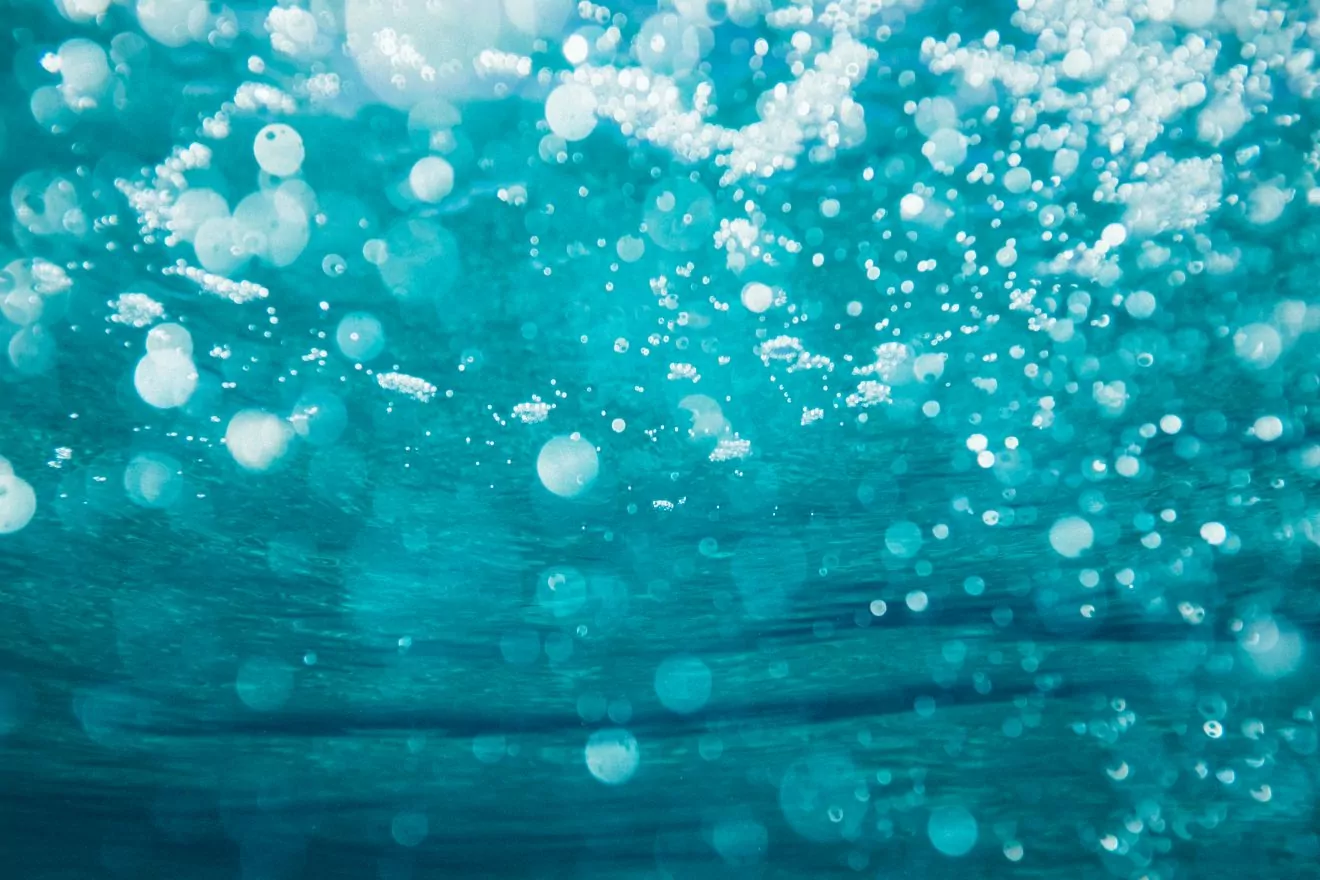
The human body is roughly 60% water, so H20 is necessary for all of the systems in our body to function well. Water helps us regulate body temperature, aids in smooth digestion, delivers oxygen to our muscles, protects and cushions joints, and flushes out unwanted toxins. While the recommended daily water intake varies widely by individual, we like to suggest 3-4 liters of water if you are out for a day of hiking. This amount will keep you at “happy camper” status when you return to camp that night.
Develop a strong pre-hydration game
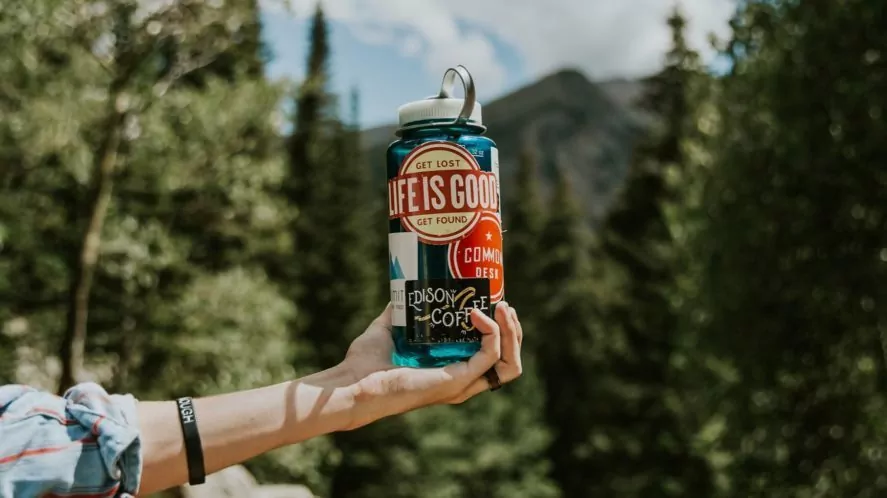
If you want to know how to stay hydrated while hiking, it starts before you ever hit the trail.
No matter where you live, we all wake up dehydrated. (Simply put, the body was deprived of water for around 6-8 hours.) Rather than waiting until you are working up a sweat on the first mile up to Observation Point in Zion National Park, consider pre-hydrating while eating your breakfast.
Pre-hydration goes a long way to help you feel your best for the duration of your trip. The week before your hiking excursion, prioritize hydration in your daily life. When you arrive at the gateway town for a Wildland trip, you may find yourself at a higher elevation than where you live (think Cusco, Peru, or Flagstaff, AZ). At higher elevations, the body needs more water to perform well.
So, if you are heading out from sea level to a destination like Bryce Canyon National Park (which has a sneaky elevation of ~7,700ft), drink plenty of water leading up to and upon your arrival!
Explore Your World with Award Winning Guides
Consider using a hydration bladder
You may think hydration bladders seem silly on the trail, but on a backpacking trip, they are the most ergonomic way to ensure you have enough water between streams and rivers fill-ups. Nalgene water bottles are great too but can be cumbersome — and you’ll have to stop more often to strip off a heavy pack to access the bottle (or bug your hiking buddy to grab it for you!) If you want to learn how to prevent dehydration when hiking, consider using a hydration bladder.
A hydration bladder features a convenient straw that is always right near your mouth. The added bonus with water bladders? Because they are so accessible, I tend to drink more throughout the day just because water is always available to me. REI or any sports store is a great place to shop for one. We think a 3-liter bladder is the best hydration system for hiking on any Wildland Trekking trip.
Go to bed with a full water bottle near your tent
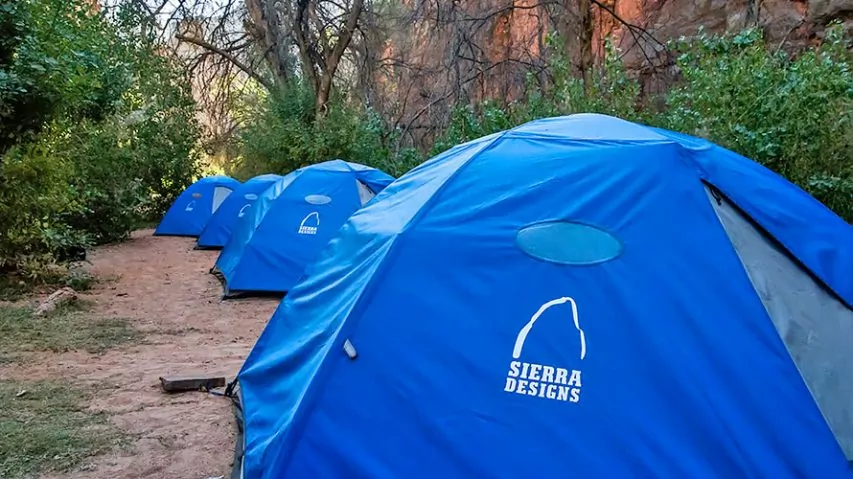
After a huge day of hiking in the mountains, you will likely arrive back to camp happily tired and with a totally empty hydration bladder. Great job! But, your work doesn’t stop there — you shouldn’t only be drinking water while hiking, you should prioritize hydration while at camp, too! As we mentioned earlier, once we head off to sleep, our body will work without water all night. Most of our guides fill up one water bottle and set it just outside their tent every night. This ensures that if you wake up thirsty, water is easily accessible. Plus, when you wake up, you can begin that pre-game: fueling up.
Practice “LNT” with your water vessel choice
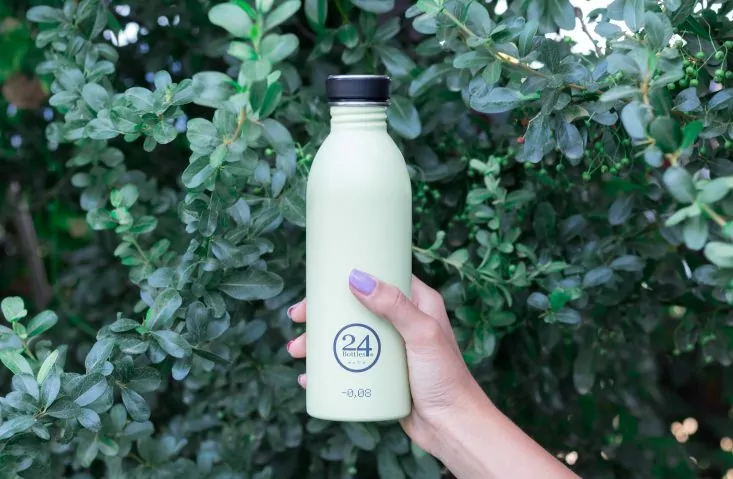
We all know disposable plastic water bottles plague our oceans and landfills. You can extend your Leave No Trace (LNT) ethics to what water bottle (and other products) you choose to bring on a trip. Go green and commit to purchasing a Nalgene or two as well as a hydration bladder if you are opting for longer hikes. You can clean all of these items with hot soapy water and then use them for much, much longer than a 16 oz plastic bottle (even if it is Smartwater bottle.)
Replace your lost electrolytes
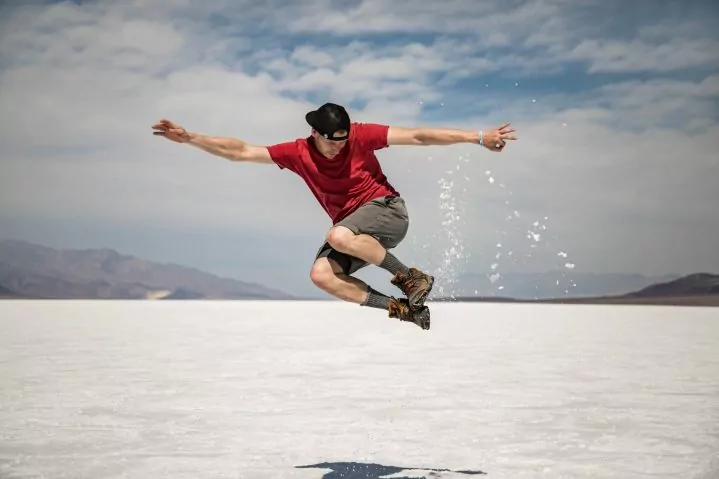
You’ll want to replace electrolytes on every hike, but it is even more crucial when you are sweating hard in the heat of the desert. When you sweat, you lose essential nutrients like sodium (salt), potassium, and chloride. Your body needs these components to run effectively, so make sure to replenish them throughout your hiking day! You can opt for electrolyte-rich drinks like Nuun (an electrolyte tablet) or coconut water. Additionally, you could add some extra table salt to your dinner or lunch to replace the sodium that you sweat out on the trail.
Winter Water Options
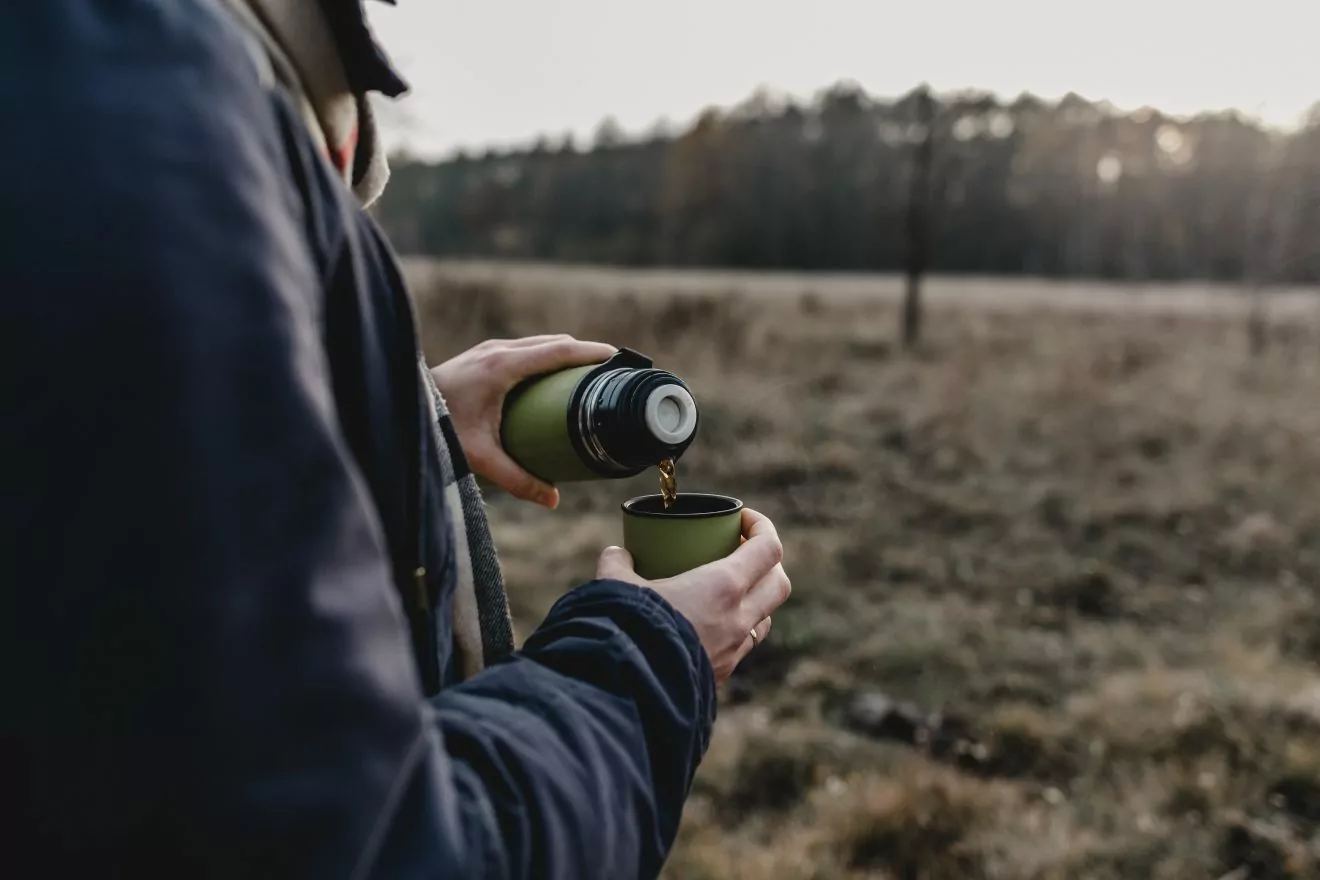
When winter weather hits, it is easy to let hydration fall by the wayside. But, drinking plenty of water when you are exercising during cold weather is just as important as during hot weather (if not more!) When you’re prepping for a winter snowshoe through Yellowstone, you can load a thermos up with some hot drinks. Tea is a great option, or you could opt for warm water with a small amount of a sports drink mixture to make the water more palatable. Just like warm weather hiking, pre-hydrating before a winter hike is a great way to get ahead of the curve. In winter, your body often has a higher output–it is working harder trudging through snow and sweating under all those extra layers. Also, while people tend to tout that coffee has dehydrating effects, if it is used in moderation, coffee does offer at least some hydration benefit (especially those with lower caffeine levels!)
Hike with wildland in the winter
Be knowledgeable about your backcountry water sources
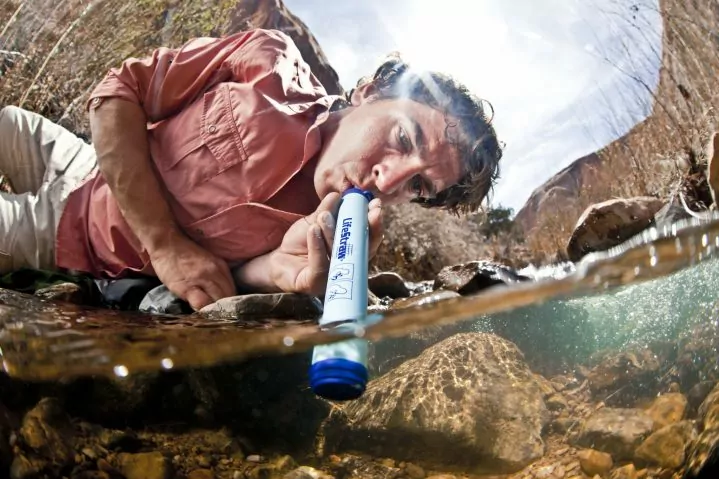
If you are doing a day hike at any one of our national parks, potable drinking water is available at most campgrounds, convenience stores, and trailheads (but be sure to check before you go!) It’s no fun to show up to a trailhead with an empty water bottle only to find the tap has been turned off for the season. So, fill up whenever you’re in populated areas and near campgrounds.
But the true test of becoming a hydration Jedi Master is when you learn about hydrating in the backcountry. The key to staying hydrated in the backcountry safely is filtering and purifying. On a backpacking trip, you will need to fill up your water bottles from streams, rivers, and— sometimes —murky puddle-like sources in the desert. On a Wildland trip, professional guides will know the available water sources along the trail. Then, we’ll help you to filter and purify all of your drinking water.
However, if you want to continue hiking on your own in the backcountry, your next step would be to look into water filtration products. Every hiker has a preference when it comes to water filtration, and it will primarily come down to what type of environment you hike in most. For example, if you’re day hiking in the Pacific Northwest where water flows plentifully, the Katadyn BeFree water bottle may be sufficient. If you’re providing water for a large hiking group, you may want to opt for a system like the MSR Gravity Filter. And if you’re in the desert where you’re dealing with a lot of sediment that can clog filters, you may go for a simple coffee filter filtration with chemical purification systems such as Aquamira. No matter what method of water purification you choose, be sure you have sufficient access to water on your hike (whether that means carrying it in or purifying water along the trail)!
Water is one of the most important considerations on any hiking trip – whether you’re day hiking or backpacking. Staying hydrated while hiking will allow you to feel your best so you can hike longer and harder. Trust us, you only need one experience when you run out of water to realize how crucial it is. If you’d like to know more about hiking hydration or want the ease of a guided hiking trip, we’d love to help!




